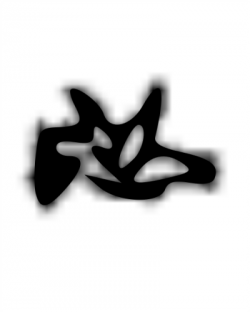Astronomical Symbols
This page lists all the various symbols in the Astronomical Symbols category.
Astronomical symbols are symbols used to represent various celestial objects, theoretical constructs and observational events in astronomy. The earliest forms of these symbols appear in Greek papyri of late antiquity. The Byzantine codices in which the Greek papyri were preserved continued and extended the inventory of astronomical symbols. New symbols were further invented to represent many just-discovered planets and minor planets discovered in the 18th-20th centuries.
Symbols in this category:
10 Hygiea
10 Hygiea is the fourth largest asteroid in the Solar System by volume and mass and is located in the asteroid belt.
10 Hygiea
10 Hygiea is the fourth largest asteroid in the Solar System by volume and mass and is located in the asteroid belt.
14 Irene
14 Irene is a large main-belt asteroid, discovered by John Russell Hind on May 19, 1851.
16 Psyche
16 Psyche is one of the ten most massive main-belt asteroids. It is over 200 kilometers in diameter and contains a little less than 1% of the mass of the entire asteroid belt. It is the most massive metallic M-type asteroid.
18 Melpomene
18 Melpomene is a large, bright main-belt asteroid that was discovered by J. R. Hind on June 24, 1852, and named after Melpomenē, the Muse of tragedy in Greek mythology. It is classified as an S-type asteroid and is composed of silicates and metals.
19 Fortuna
19 Fortuna is one of the largest main-belt asteroids. It has a composition similar to 1 Ceres: a darkly colored surface that is heavily space-weathered with the composition of primitive organic compounds, including tholins.
2 Pallas
Pallas, minor-planet designation 2 Pallas, is the second asteroid to have been discovered (after Ceres), and one of the largest in the Solar System
26 Proserpina
26 Proserpina is a main-belt asteroid discovered by R. Luther on May 5, 1853. It is named after the Roman goddess Proserpina, the daughter of Ceres and the Queen of the Underworld.
28 Bellona
28 Bellona is a large main-belt asteroid. It was discovered by R. Luther on March 1, 1854, and named after Bellōna, the Roman goddess of war; the name was chosen to mark the beginning of the Crimean War.
29 Amphitrite
29 Amphitrite is one of the largest S-type asteroids, probably third in diameter after Eunomia and Juno, although Iris and Herculina are similar in size.
Citation
Use the citation below to add this symbols category to your bibliography:
Style:MLAChicagoAPA
"Astronomical Symbols." Symbols.com. STANDS4 LLC, 2024. Web. 27 Jul 2024. <https://www.symbols.com/category/34/Astronomical+Symbols>.
















Have a discussion about the Astronomical Symbols category with the community:
Report Comment
We're doing our best to make sure our content is useful, accurate and safe.
If by any chance you spot an inappropriate comment while navigating through our website please use this form to let us know, and we'll take care of it shortly.
Attachment
You need to be logged in to favorite.
Log In